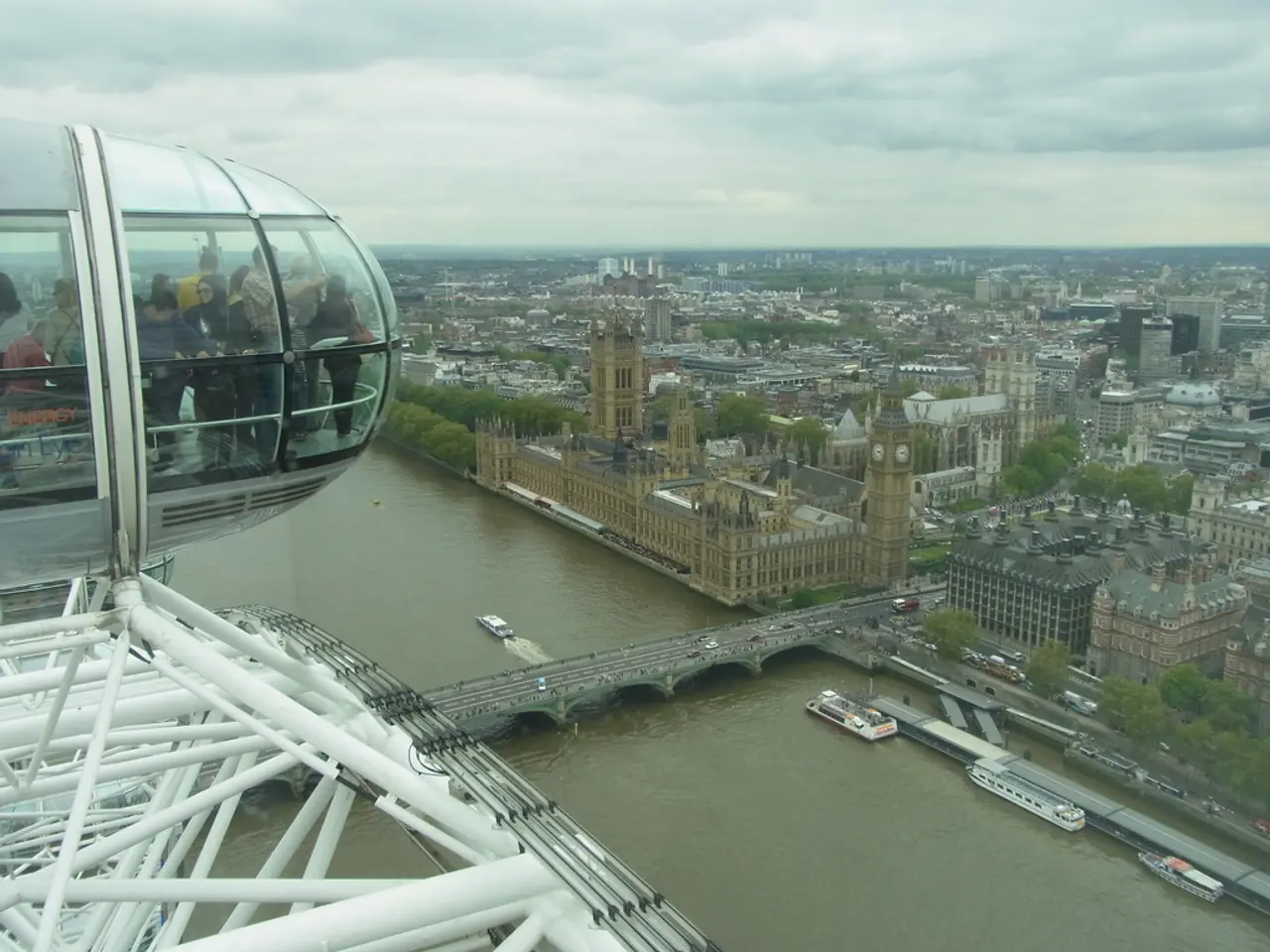Decrease in rental prices for recently leased properties for the initial time in five years following an ongoing price hike
In a recent report, property firm Hamptons has revealed that the average rent on newly-let homes in Britain has experienced a decline for the first time since August 2020. According to the Hamptons lettings index, which is based on rents achieved rather than advertised rents, the national average rental cost currently stands at £1,373 per month, a figure that is around a third higher than in August 2020 [1][2].
This decline in average rents can be attributed to several key factors. Firstly, there has been a noticeable cooling in demand for rental properties. This trend is particularly pronounced in London, where half of all buyers in early 2025 were first-time homeowners, thereby reducing rental demand [5].
Secondly, regional differences have played a significant role. While rents continue to rise in regions such as the East Midlands and West Midlands, London has experienced the steepest decline, with rents falling 3.0% year-on-year in July 2022, marking the biggest annual drop since May 2021 [2][5]. Other areas like Wales, the North East, and Yorkshire have also seen rental declines or slowdowns, contributing to the national average rental fall [2][5].
Another factor influencing the decline in average rents is the behaviour of landlords. While rents on renewed tenancies continue to climb, their growth has slowed, and the gap between rents on new lets and renewals has narrowed, suggesting that landlords are moderating asking rents for new tenancies, which likely contributed to the decline in average rents on newly-let homes [2][5].
The report also suggests that while demand may be softening, the underlying cost pressures haven't gone away. Post-pandemic changes, including inflationary pressures, cost of living, and shifts in housing choices, are inferred factors influencing this rental market adjustment, though not explicitly stated [1][5].
In conclusion, the decline in average rents on newly-let homes in Britain as of July 2022 reflects reduced rental demand linked to increased homeownership and regional rent reductions, especially in London, alongside landlords adjusting rents on new lets more cautiously [1][2][5].
References:
[1] Hamptons (2022). Rent Report - July 2022. [online] Available at: https://www.hamptons.co.uk/research/rent-reports
[2] The Guardian (2022). Rents on new lets decline for first time since 2020, Hamptons report shows. [online] Available at: https://www.theguardian.com/money/2022/aug/11/rents-on-new-lets-decline-for-first-time-since-2020-hamptons-report-shows
[3] The Telegraph (2022). Rents on newly-let homes fall for first time in five years, Hamptons report shows. [online] Available at: https://www.telegraph.co.uk/money/property/house-prices/10775178/Rents-on-newly-let-homes-fall-for-first-time-in-five-years-Hamptons-report-shows.html
[4] BBC News (2022). Rents on new lets fall for first time in two years, Hamptons report shows. [online] Available at: https://www.bbc.co.uk/news/business-62482621
[5] The Financial Times (2022). Rents on new lets fall for first time since pandemic, Hamptons report shows. [online] Available at: https://www.ft.com/content/83a6b87b-254f-4e0e-92f0-a0a8b4c35d8a
- The cooling demand for rental properties, particularly in London, where many first-time homeowners are emerging, has resulted in a shift in the finance and investing landscape, affecting the real-estate sector.
- Regional differences in the rental market have also contributed to the economic trend, with areas like Wales, the North East, and Yorkshire seeing rental declines or slowdowns, along with the steepest decline in London.
- Landlords' cautious adjustments to asking rents for new tenancies, reflecting a slowdown in the growth of rents on renewed tenancies, have further influenced the declining average rents on newly-let homes.




